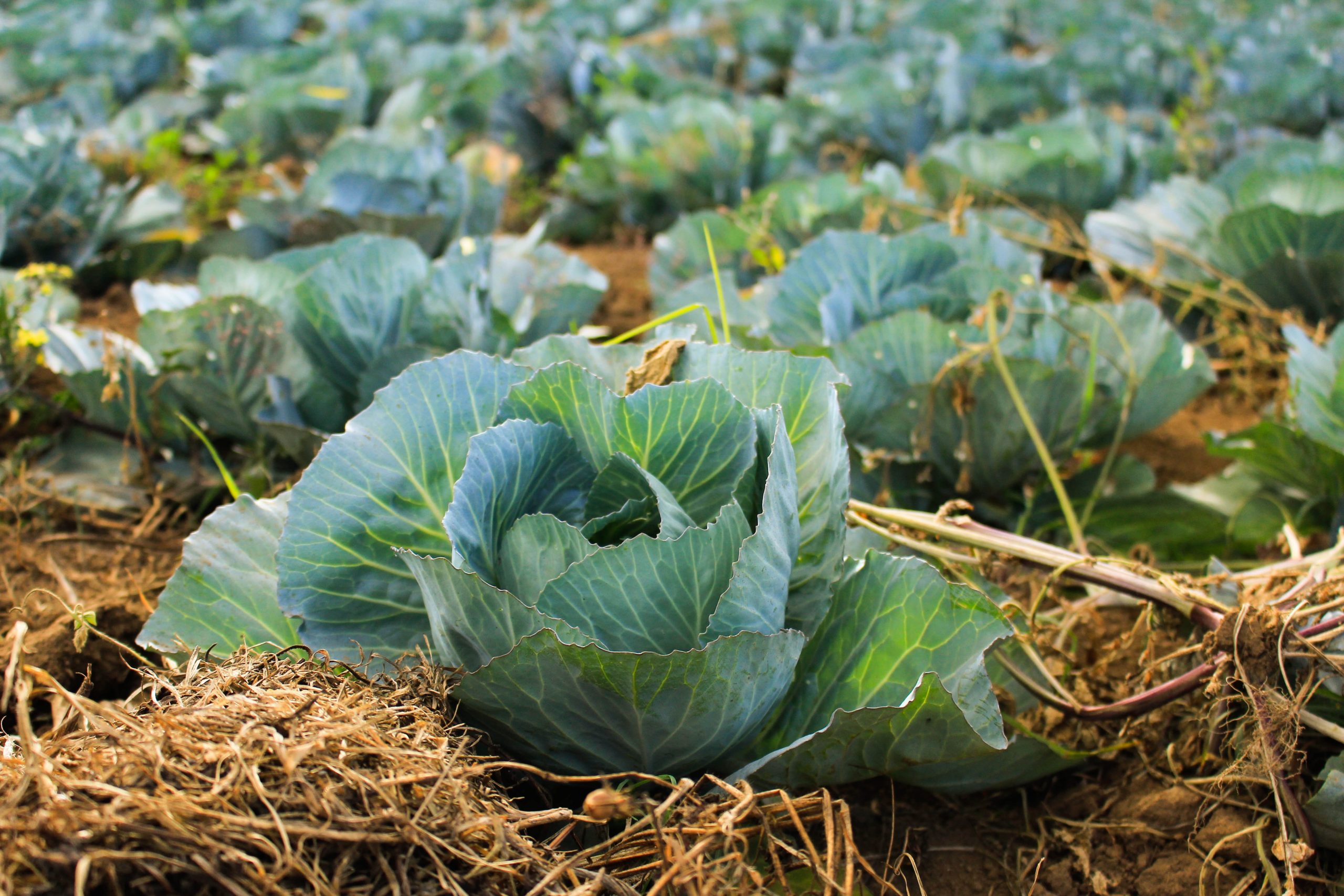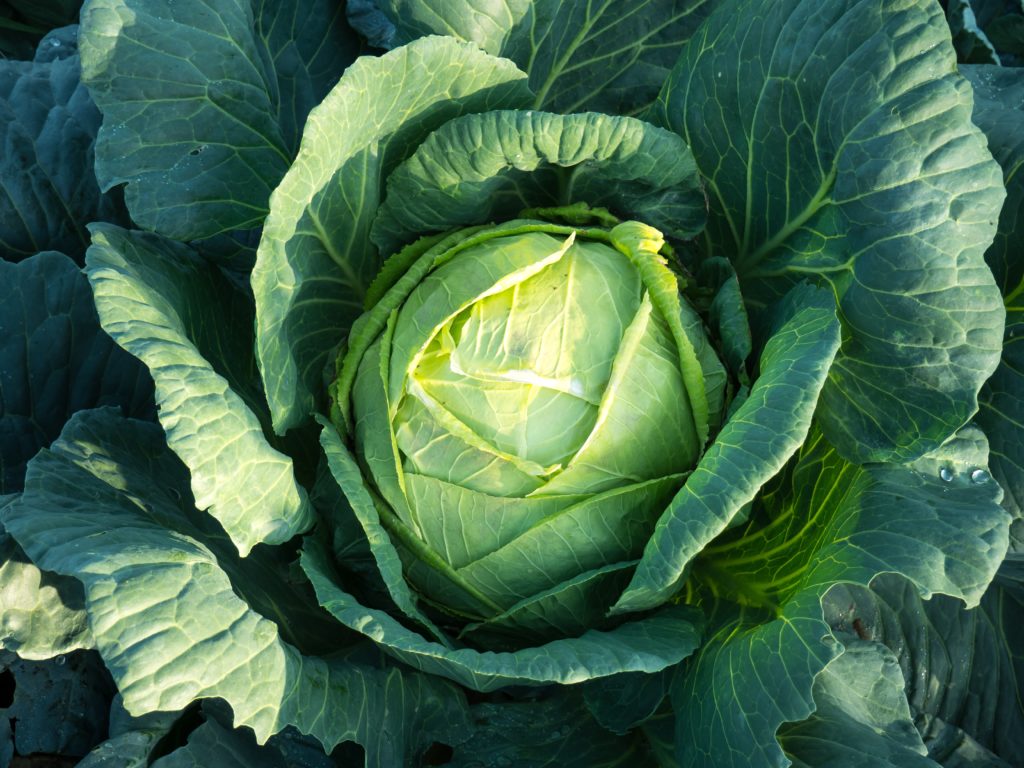If you’re looking for a cool-weather crop to add to your home garden, cabbage is a great option. In this blog post, we’ll cover everything you need to know about how to grow cabbage at home, from planting to harvesting. With just a little bit of care, you can enjoy fresh, homegrown cabbage all season long!

Planting Cabbage.
The best time to plant cabbage is in the spring, after the last frost. Cabbage can also be planted in the fall, but you will need to start the seeds indoors about 6-8 weeks before the last frost.
Where to Plant Cabbage.
Cabbage likes full sun or partial shade and well-drained soil. If your soil is heavy, add some sand or compost to lighten it up. Cabbage also does well in raised beds or containers.
How to Plant Cabbage.
Start with seeds or transplants (seedlings that have already been started indoors). Sow the seeds about ¼ inch deep and 2 inches apart in rows that are 18-24 inches apart. When the seedlings are 4-6 inches tall, thin them out so they are 12-18 inches apart. Transplant seedlings using the same spacing as for seeds.
To transplant seedlings, dig a hole that is large enough to hold the root ball without crowding it. Gently remove the seedling from its container and loosen any tangled roots with your fingers. Place the seedling in the hole so that the top of the root ball is even with or slightly above ground level; fill in around it with soil and water well.
Caring for Cabbage.
Cabbage needs moist soil at all times to prevent the heads from splitting. Water regularly, especially during dry spells. Apply a thick layer of mulch around the plants to help retain moisture in the soil.
Fertilizing Cabbage.
Fertilize cabbage plants every 4-6 weeks with a balanced fertilizer such as 10-10-10. Apply the fertilizer according to package directions, and be sure not to overfertilize, as this can damage the plant roots and lead to nutrient deficiencies.
Mulching Cabbage.
Mulch cabbage plants with a layer of straw, hay, or shredded leaves to help keep the soil moist and cool and to prevent weeds from competing with the cabbage for water and nutrients.
Pest Control for Cabbage.
Cabbage is susceptible to attack by many different pests, including caterpillars, aphids, slugs, and earwigs. To control these pests organically, use floating row covers or insecticidal soap sprays. Handpicking is also effective for small infestations.
Harvesting Cabbage.
The best time to harvest cabbage is in the morning after the dew has evaporated but before the heat of the day sets in. For early varieties, this is usually about 70 days after planting. For later varieties, it is about 90 days after planting.
You can tell when cabbage is ready to harvest by checking the heads. They should be firm and solid, with no soft spots. The leaves should be crisp and dark green.
If you wait too long to harvest cabbage, the heads will split open and the quality will decline.
How to Harvest Cabbage.
To harvest cabbage, cut the stem about 2-3 inches below the head with a sharp knife or pruning shears. Be careful not to damage any of the other leaves as you cut through the stem.
After cutting the stem, lift the head gently out of the ground being careful not to break it apart. If any roots are still attached, shake them off or carefully remove them with your fingers or a trowel.
Place your harvested cabbage heads in a cool, shady place until you are ready to clean and store them.

Conclusion
If you’re looking to add some leafy greens to your home garden, cabbage is a great option. With just a little bit of care, you can grow healthy and delicious cabbage heads right in your backyard. Here’s what you need to know about planting, caring for, and harvesting cabbage.
When it comes to planting cabbage, timing is everything. Cabbage should be planted in early spring or late summer/early fall, depending on your climate. It’s important to choose a sunny spot in your garden with well-drained soil. When planting, be sure to space the seedlings 12-24 inches apart.
Caring for your cabbage plants is relatively easy once they’re established. Water them regularly (keeping the soil moist but not soggy), fertilize them every few weeks, and mulch around the plants to help retain moisture and control weeds. Be on the lookout for pests like aphids and caterpillars, and take steps to control them if necessary.
Harvesting cabbage is simple: just wait until the heads are fully mature (usually 4-6 weeks after planting). Cut the heads off at ground level, being careful not to damage the surrounding leaves. Enjoy your homegrown cabbage fresh or cooked in your favorite recipes!

